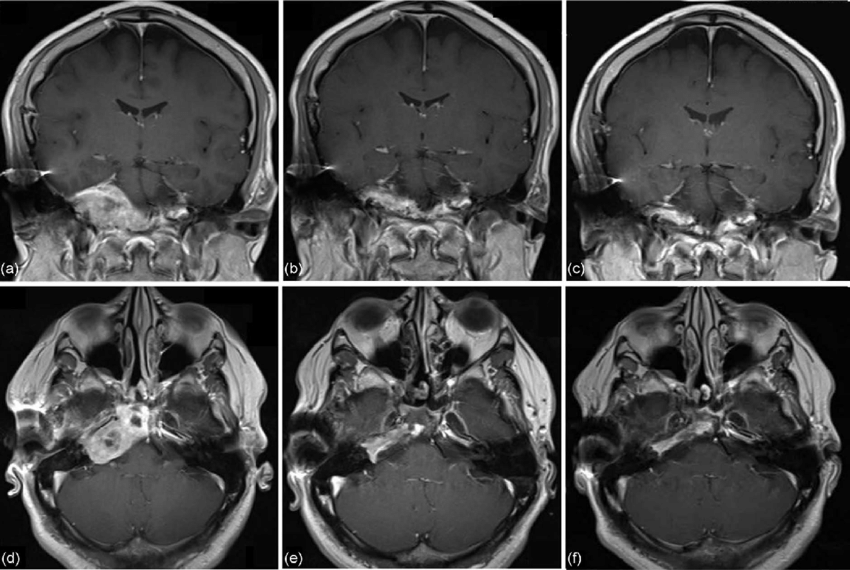Skull base cancer
Skull base cancer refers to tumors that develop in the bones, cartilage, nerves, or other structures at the base of the skull. The skull base is a complex area that houses critical structures such as the brain, major blood vessels, cranial nerves, and the spinal cord. Tumors in the skull base can be benign (non-cancerous) or malignant (cancerous), and they can originate from various tissues and structures.
Types of Skull Base Tumors:
1. Sinonasal carcinoma- These tumours arise from nose and paranasal sinuses and involve the skull base.
2. Nasopharyngeal Carcinomas: Cancers that develop in the nasopharynx (the upper part of the throat behind the nose) can extend to the skull base.
3. Esthesioneuroblastoma or Olfactory Neuroblastoma: these tumours arise from olfactory nerve fibers in roof of nose.
4. Meningiomas: These tumors arise from the meninges, the protective layers surrounding the brain and spinal cord. Meningiomas are often benign but can cause symptoms depending on their size and location.
5. Chordomas These rare tumors typically develop from remnants of the notochord, a structure present during embryonic development. Chordomas commonly occur at the skull base
6. Chondrosarcomas: Arising from cartilage, chondrosarcomas are malignant tumors that can affect the skull base.
7. Pituitary Tumors: Tumors originating from the pituitary gland, located at the base of the brain, can impact hormone production and cause various symptoms
8. Schwannomas and Neurofibromas: These tumors involve nerves and can affect the cranial nerves that pass through the skull base, causing symptoms related to nerve dysfunction.

Treatment:
- Treatment options depend on the type, location, and stage of the tumor.
- Surgery is often a primary approach to remove or debulk the tumor in most of cases.
- Radiation therapy may be used to target remaining cancer cells or in cases where complete surgical removal is not possible.
- In some cases, chemotherapy or targeted therapies may be recommended.
- In some cases, chemotherapy or targeted therapies may be recommended.
Symptoms:
- Nasal blockage
- Nasal bleed
- Loss of smell
- Headaches
- Vision problems
- Hearing loss
- Difficulty swallowing
- Facial numbness or weakness
- Changes in speech
- Balance and coordination issues
Diagnosis:
- Imaging studies such as CT scans, MRI, and angiography to visualize the tumor and its relationship to surrounding structures.
- Biopsy to obtain a tissue sample for laboratory analysis, confirming the type of tumor. Mostly biopsy is done by nasal endoscope.
Prognosis:
- Prognosis varies depending on the type of tumor, its location, and the extent of its spread.
- Benign tumors generally have a better prognosis than malignant ones.
- he success of treatment and long-term outcomes depend on early detection and appropriate management.
Skull base tumors can be challenging to treat due to their intricate location. A multidisciplinary approach involving neurosurgeons, otolaryngologists, radiation oncologists, and other specialists is often required to provide comprehensive care. Early diagnosis and appropriate treatment planning are critical for improving outcomes and preserving neurological function.


 Max Hospital, Vaishali, Gaziabad
Max Hospital, Vaishali, Gaziabad